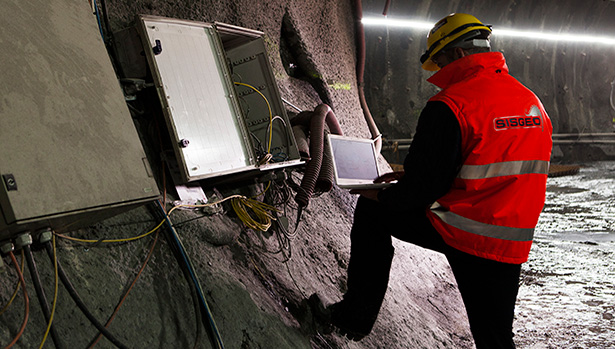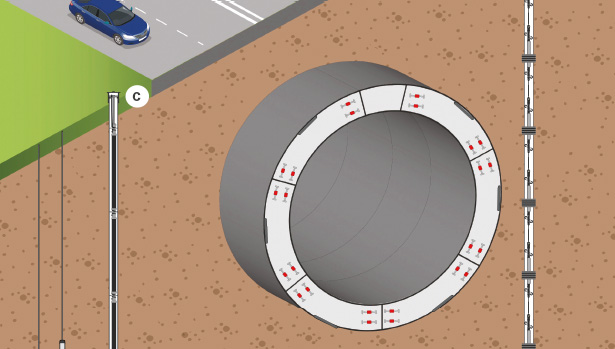What is tunnels monitoring?
Tunnel monitoring involves gathering data related to the geological conditions surrounding the tunnel, as well as the behavior of the soil and rock in which the tunnel is built.
Geotechnical tunnel monitoring is typically performed during the construction phase of a tunnel project, as well as during the operation and maintenance of the tunnel. During the construction phase, geotechnical monitoring can help to identify potential hazards, such as rock falls or soil instability, and inform designers and builders of the tunnel to ensure its safety and stability.
During the operation and maintenance phase, geotechnical monitoring can help to detect any changes in the behavior of the soil or rock surrounding the tunnel, such as settlement or deformation, which could impact the safety and stability of the tunnel. By regularly monitoring these geotechnical factors, engineers and maintenance crews can identify potential issues early on and take corrective actions to ensure the safety and functionality of the tunnel.
Geotechnical tunnel monitoring typically involves the use of various types of sensors, such as strain gauges, piezometers and inclinometers, which are installed in the tunnel and surrounding areas to collect data on factors such as ground movement, groundwater levels, and rock stress. The data collected from these sensors is then analyzed to provide insight into the geotechnical conditions surrounding the tunnel and to inform decision-making related to tunnel maintenance and operations.

Which are the challenges in tunnel monitoring?
Tunnels monitoring typically involves measuring various parameters to assess the stability and safety of the tunnel. Some of the subjects that may be monitored include:
- Ground and rock deformation: monitoring ground and rock deformation can help identify any potential instability or movement in the tunnel’s surroundings. This involves measuring changes in slope, settlement, and heave using inclinometers, extensometers, and other sensors.
- Groundwater pressure and flow: monitoring groundwater pressure and flow can help identify potential hazards such as seepage or flooding. This involves measuring pore pressure, water levels, and flow rates using piezometers and flow meters.
- Structural deformation: monitoring the deformation of the tunnel itself can help identify potential structural issues such as cracks or movements. This involves measuring displacement and strain using sensors such as strain gauges and tiltmeters.
During tunnel excavation, it is important to also monitor the buildings and ground above the tunnel to ensure their stability and safety. Some of the measurements that can be taken include:
- Settlement: vertical displacements occurs when the ground above the tunnel sinks moves due to the excavation process. Measuring settlement using instruments such as extensometers or topographic survey can help identify any potential issues and determine whether corrective action is necessary.
- Groundwater levels: tunnel excavation can cause changes in the groundwater levels, which may affect the stability of the ground above the tunnel. Monitoring groundwater levels using piezometers can help identify any potential issues and determine whether corrective action is necessary.
- Crack monitoring: tunnel excavation can cause cracks to form in nearby buildings and structures. Monitoring these cracks using crack gauges or other sensors can help identify any potential issues and determine whether corrective action is necessary.
- Tilt monitoring: tunnel excavation can cause the ground to tilt, which may affect nearby buildings and structures. Monitoring tilt using tiltmeters, in-place inclinometers or extenso-inclinometers can help identify any potential issues and determine whether corrective action is necessary.


